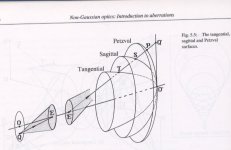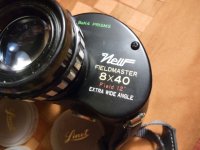Lee:
I had asked for a comment on another thread about the Victory HT, about how you use which finger when focusing ?
I found the focuser lower than other binoculars and I was using my middle finger, rather than my index finger when I tried the HT recently.
How do you focus your HT, with what finger, and how does the new SF focuser compare in this regard to the HT ?
Jerry
Yo Jerry
This is a good question. For years, for no good reason that I can think of, I focused my Dialyt 10x40 and FL 8x42 using a combination of first and second finger. My hand must have been quite contorted to achieve this but we drift into bad habits like this don't we? Like sitting or standing with poor posture.
When I got my HT the feel and handling was so different I decided to let the bins decide what was best. Now, I understand some folks will say it is for manufacturers to make products that are comfortable to hold by all folks and not for folks to have to modify how they grip the products. But you know that kind of assumes you are holding and gripping stuff in an efficient and healthy way, and i don't think that I was in the past.
OK, cut to the chase. Whenever I pickup my HT my second, third and pinky fingers wrap around the barrel and my first finger lands straight on the focus wheel. It works every time whether I grab my bins urgently or pick them up thoughtfully. So although it felt different at first, I began focusing with my first finger and inside a couple of days it felt so natural that I forgot about it.
It is possible to do other things with the focus for example to shift your hand and then use first and second fingers alternately so you 'walk' the focus to where you need it and you can shift focus quite rapidly doing this, but 95% of the time I just use my first finger.
SF feels the same to me although I haven't yet had one in my hands long enough to really come to grips (sorry, theres a faint joke in there somewhere) with them, but I really think that the HT-grip works with them just fine.
Now, since the weight of SF feels more 'inside your hand' and with less of it suspended way down there at the objectives end, I can actually focus SF while holding them with one hand. I am not sure why you would want to do that in most circumstances (on horseback holding the reins with one hand?) but its do-able.
The grip is comfortable as there is quite a bit of room down there between bridges 2 and 3 to get your fingers in and grasp the SFs.
Hope that clarifies things a bit.
Lee







